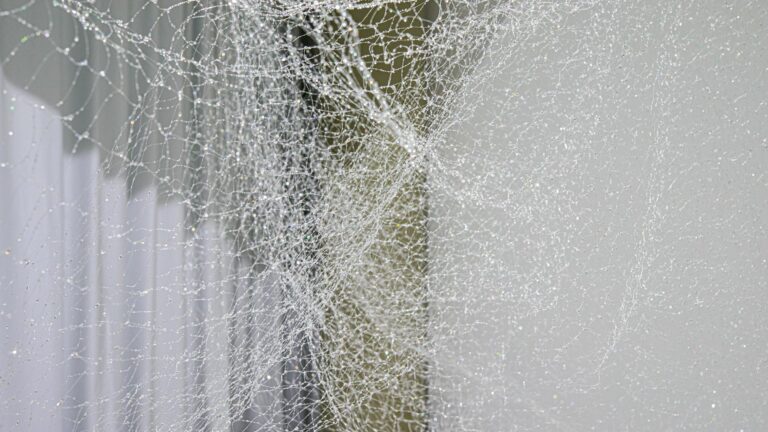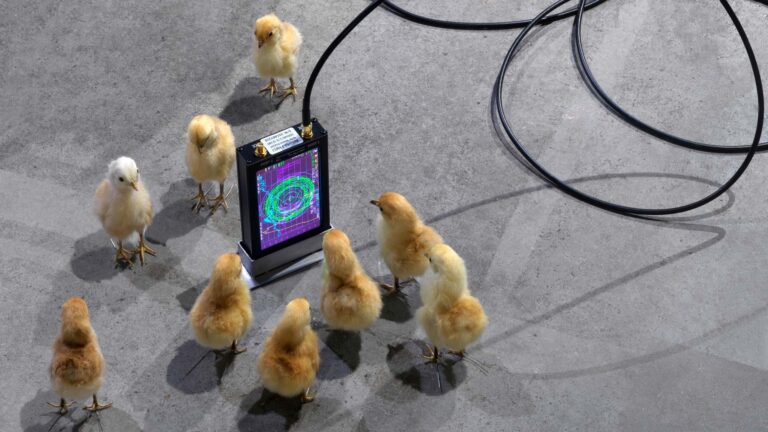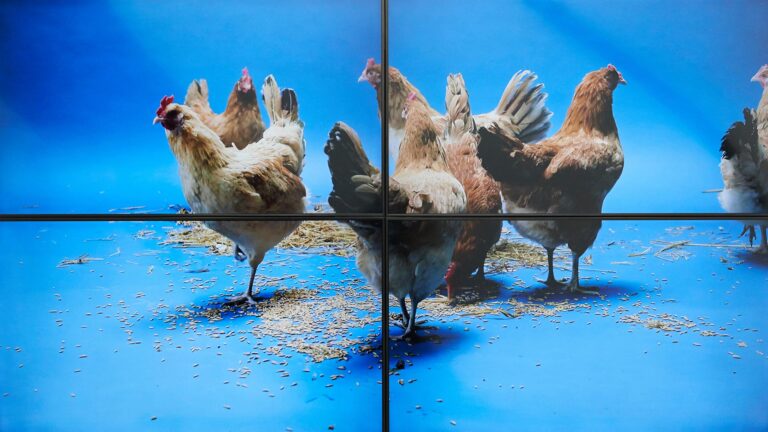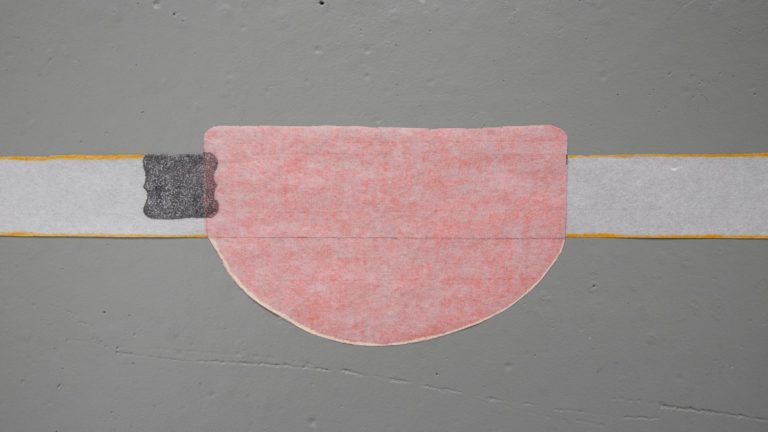Artist: Nicola Arthen
Exhibition title: An Intricate Well, Am I an Object, part II
Venue: P/////AKT, Amsterdam, The Netherlands
Date: July 10 – August 15, 2021
Photography: Charlott Markus / all images copyright and courtesy of the artist and P/////AKT, Amsterdam
Less than 70 kilometres from here is a landscape that contains several ready-hewn building blocks from red sandstone that arrived there a hundred years ago.
Titled FOLDERS_, their bodies have entered this exhibition space in the form of modern logistics—the kind of containers you would expect most of the products that travel this world currently are housed in. The surface of brown, recycled mate-rial, the wavy, sandwiched layers of paper, slightly dented corners, tapes and straps, labels to be read by devices or with a particular knowledge. It is the ubiquity of these containers which makes them a language, obscuring the complexity the sup-ply chains that materialise them. Instead they appear familiar and basic, almost dull. We know what to expect and what diverts from expectation—these building blocks of the landscape require an odd grammar in this language.
Recurved Rock-Bristle is a type of moss. It did not exist in the biosphere registers of the Netherlands until a hundred years ago, when it was first discovered on the sur-face of these building blocks. Moss is attracted to sandstone and this one may have been a blind passenger that came along from Maulbronn which is in the South-West of Germany. It came via train tracks that were laid especially for its arrival.
As the travel of this moss, unintended by the people that transported it, shows: transmission is inherent to any form of logistics. Transport, transmission, extraction, cutting, unearthing, liberating, displacing, orientation, patterning, containing, ex-haustion. When displaced, those involved in the movement affect each other, even-tually producing novelty.
An architect was also attracted to the same sandstone like the moss as its red colour was of the kind of the flowers he observed on the heath where a museum would have to be built. A museum is not a container, maybe more a circumscription of a space with a particular meaning. The museum which the famous architect would have had built, would be like a ship in the sandy waves of the Hoge Veluwe— which was a fitting image as it was ships that brought in the ore that was traded for money to build the museum and buy artworks. The ore came from Chile and from Algeria, and the Netherlands must sure have felt like a distant place for the people that mined the ore. For moments, their hitting of the rock may have been in sync with the people who hit the stones in Maulbronn shaping the building blocks for the museum according to the plans of the architect.
Through a process called “tunnelling” that required the Dutch state to step in and ultimately buy the art collection and the land of the planned museum, the project of the building as the architect had envisioned it, broke apart. The idea of that building, however, exists today in the form of the stone blocks that have sunken into the landscape—objects of intention, without a dedicated meaning.
Nicola Arthen is an artist based in Amsterdam and London. His practice is an inves-tigation into the mutual relations between objects’ and humans’ capacities, a nego-tiation between site and experience. He is interested in the dilemma that occurs in things entering an art space. By isolating artefacts in their peripheral state and turn-ing them into protagonists, he is invested in their stories, struggles and unique quali-ties, as well as the poetics and politics of labour to reproduce these. He focuses on unexpected encounters in systems of standardisation—the trace of an individual’s hand or personal considerations in a serial product: a makeshift, cobbled up water-meter, a rhythmic assembly line choreography to cope with the machines’ pace, a hesitation in a computer-generated voice. His work takes the form of installations and time-based mediums, often contributing to a moderated spatial environment.
Nicola Arthen’s show at P/////AKT marks the second part of the exhibition program Am I an Object. The program—that will run until March 2022—is further featuring projects by June Crespo, Tako Taal (in collaboration with David Dale gallery, Glas-gow) and Suchan Kinoshita. It will be responded to in writings and events by stu-dents from the Sandberg Institute Critical Studies Department. Alec Mateo and Ben-jamin Schoonenberg are taking care of the first two sessions.
Nicola Arthen, An Intricate Well, installation view, P/////AKT, 2021
Nicola Arthen, An Intricate Well, installation view, P/////AKT, 2021
Nicola Arthen, The Architect, The Quarryman and the Philanthropist, 2021
Nicola Arthen, An Intricate Well, installation view, P/////AKT, 2021
Nicola Arthen, An Intricate Well, installation view, P/////AKT, 2021
From top to bottom: Nicola Arthen, Transmissions (after Max Planck Institute for Chemistry), 2021; Nicola Arthen, FOLDERS_1—22, 2021
Nicola Arthen, Transmissions (after Max Planck Institute for Chemistry), 2021
Nicola Arthen, Transmissions (after Max Planck Institute for Chemistry), detail, 2021
Nicola Arthen, Transmissions (after Max Planck Institute for Chemistry), detail, 2021
From left to right: Nicola Arthen, Transmissions (after Max Planck Institute for Chemistry), detail, 2021; Nicola Arthen, FOLDERS_1—22, detail, 2021
From front to back: Nicola Arthen, Hearing Trucks, Probably Dreaming Better, 2021; Nicola Arthen, FOLDERS_1—22, 2021; Nicola Arthen, Wall drawing of: Henry van de Velde, View: south facade (with chimney caps and stairs to the front), 12 June 1923 – Original at Collection Kröller-Müller Museum (KM 111.581), 2021
From front to back: Nicola Arthen, FOLDERS_1—22, 2021; Nicola Arthen, Wall drawing of: Henry van de Velde, View: south facade (with chimney caps and stairs to the front), 12 June 1923 – Original at Collection Kröller-Müller Museum (KM 111.581), 2021
Nicola Arthen, An Intricate Well, installation view, P/////AKT, 2021
From left to right: Nicola Arthen, FOLDERS_1—22, 2021; Nicola Arthen, Untitled, 2021
From front to back: Nicola Arthen, FOLDERS_1—22, 2021; Nicola Arthen, Wall drawing of: Henry van de Velde, View: south facade (with chimney caps and stairs to the front), 12 June 1923 – Original at Collection Kröller-Müller Museum (KM 111.581), 2021
Nicola Arthen, Wall drawing of: Henry van de Velde, View: south facade (with chimney caps and stairs to the front), 12 June 1923 – Original at Collection Kröller-Müller Museum (KM 111.581), detail, 2021
Nicola Arthen, Wall drawing of: Henry van de Velde, View: south facade (with chimney caps and stairs to the front), 12 June 1923 – Original at Collection Kröller-Müller Museum (KM 111.581), detail, 2021
Nicola Arthen, FOLDERS_1—22, detail, 2021
From front to back: Nicola Arthen, FOLDERS_1—22, detail, 2021; Nicola Arthen, Hearing Trucks, Probably Dreaming Better, 2021
Nicola Arthen, Hearing Trucks, Probably Dreaming Better, 2021


























